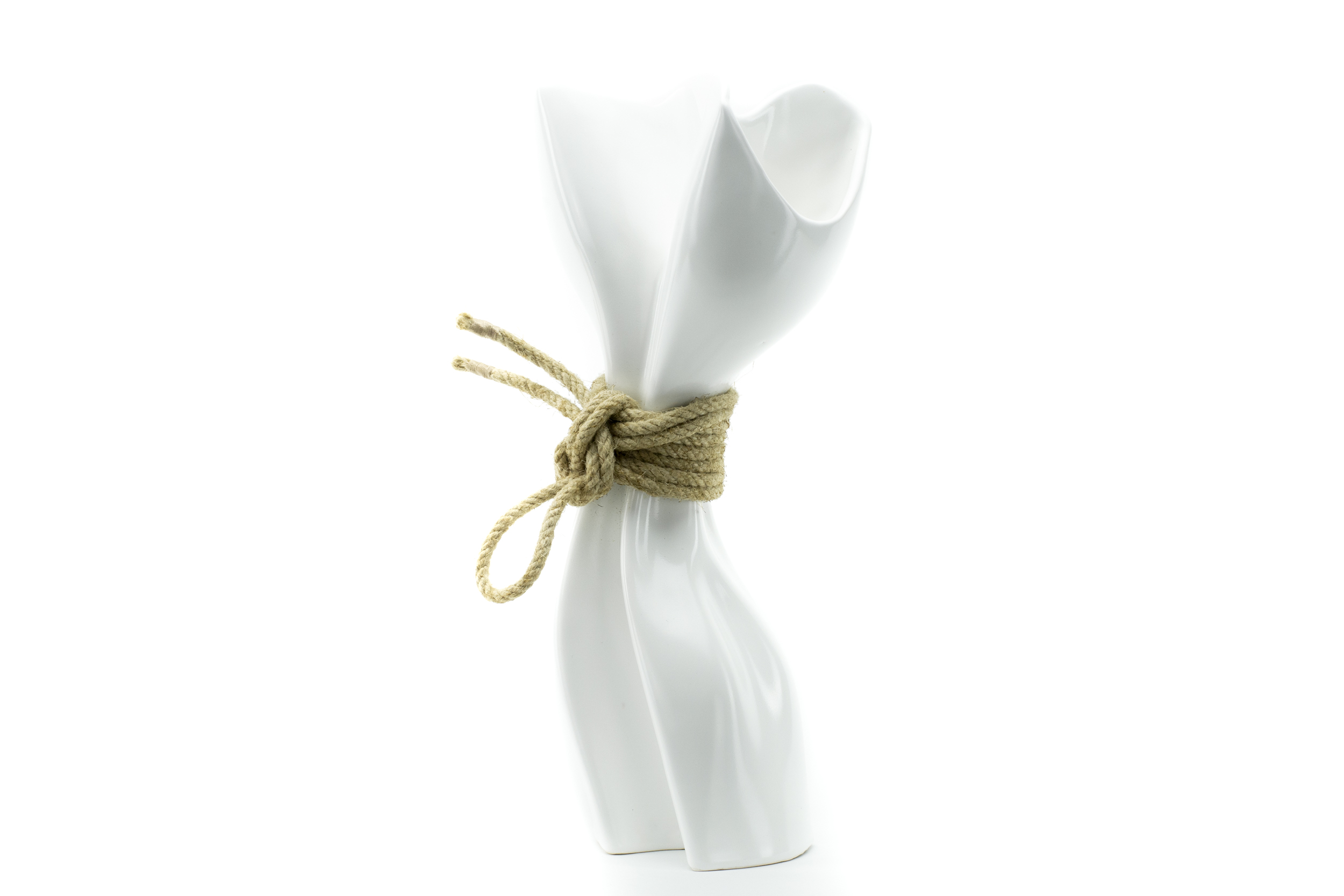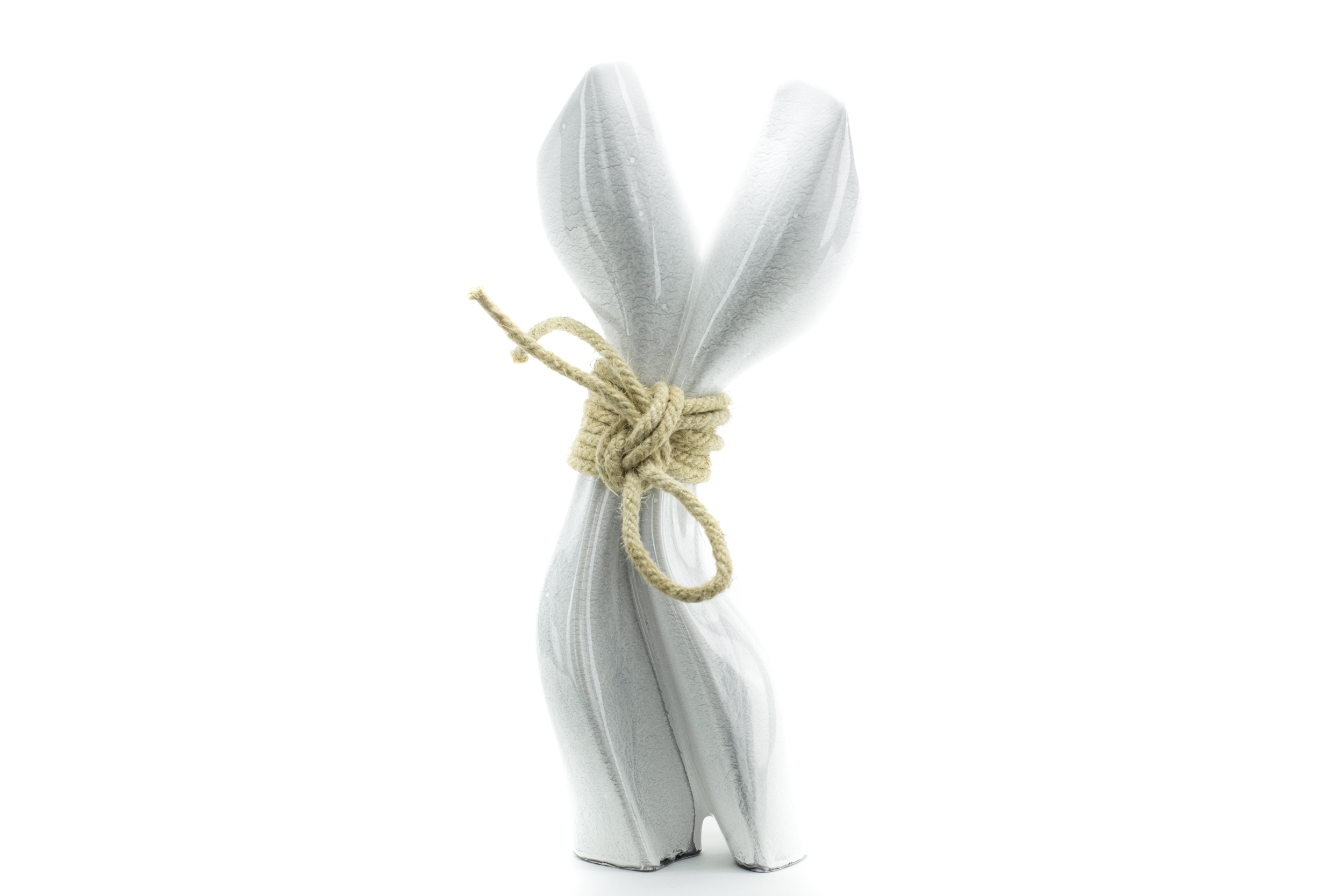Large vase Shibari
Blending Yoga and Shibari in Vase Design
The designer envisions a very high-end vase blending the organic forms of the body in yoga practice with the beauty of knot art in Shibari practice.
For those unfamiliar with Shibari, the name may be intriguing, and for others, it may be perplexing. Shibari is a Japanese art that involves rope tying. Originating from Samurai practices during wars, it later spread to erotic practices.
Clément has long been interested in knot practices, which he studies in climbing and mountaineering. He sees in this art of knotting a striking aesthetic force to be associated with ceramics to create new, very high-end decorative pieces.

Vase Design: Yoga Inspiration
The designer aims to steer his new creation towards an organic line inspired by the body. The knot will be there to add detail, showcasing its technical beauty. However, Clément Boutillon does not draw inspiration from Shibari for the vase design. He wishes to highlight the natural, unconstrained human curves and move away from the dominant aspect of the practice.
Instead, he draws inspiration from Yoga. This practice presents the body in countless postures, offering versatility and fluidity. Thus, the work begins. He shapes, composes, layers, and seeks how to create the right lines for this new vase. The initial sketches arrive, followed by digital sculpting. Clément sculpts, distorts, reverses, and refines. Gradually, a form emerges.
The vase is composed of two organic shapes, each different, which appear to face each other. Some see bodies, others flowers, and the designer appreciates this ambiguity. Small details on the surface bring strength to the vase, such as certain indentations that have had a considerable impact on the complexity of the mold, which is composed of six parts.


The Making of the Shibari Vase by the Designer
The vase has one of the largest molds to handle. Clément pours white earthenware using a cane to reach the bottom of the vase. This operation was actually taken into account during the vase design phase. The next day, the vase is “trimmed”. It needs to be extracted from the mold while it is still as soft as leather, without deforming it, and then its shapes are cut and smoothed. It then dries for several days. After an initial firing, it is dipped in a glaze bath. It then goes through a glazing booth to add a layer of glaze, and it dries again for several days. The glaze drips need to be refined, and then the vase can undergo a second firing. The vase is ready to receive its platinum stamp, which will be fired at 650 degrees very slowly.











